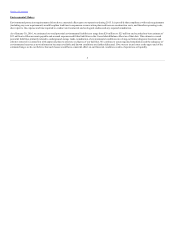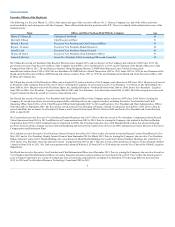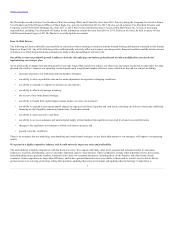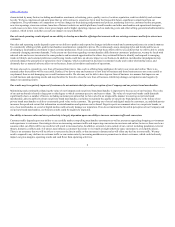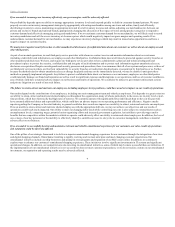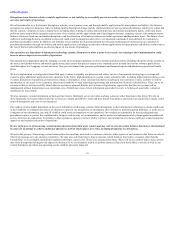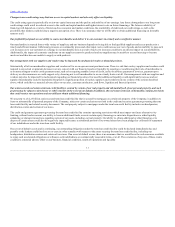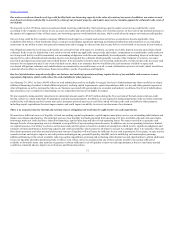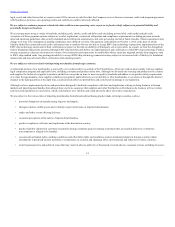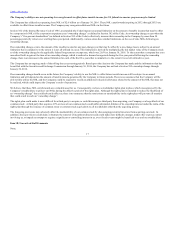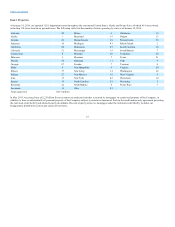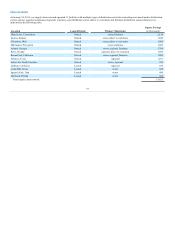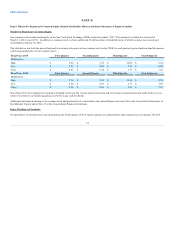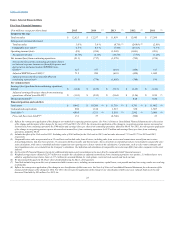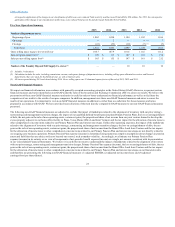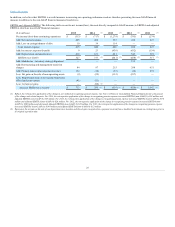JCPenney 2015 Annual Report Download - page 15
Download and view the complete annual report
Please find page 15 of the 2015 JCPenney annual report below. You can navigate through the pages in the report by either clicking on the pages listed below, or by using the keyword search tool below to find specific information within the annual report.
Table of Contents
• compliance with laws and regulations concerning ethical business practices, such as the U.S. Foreign Corrupt Practices Act; and
• economic, political or other problems in countries from or through which merchandise is imported.
Political or financial instability, trade restrictions, tariffs, currency exchange rates, labor conditions, congestion and labor issues at major ports, transport
capacity and costs, systems issues, problems in third party distribution and warehousing and other interruptions of the supply chain, compliance with U.S.
and foreign laws and regulations and other factors relating to international trade and imported merchandise beyond our control could affect the availability
and the price of our inventory. These risks and other factors relating to foreign trade could subject us to liability or hinder our ability to access suitable
merchandise on acceptable terms, which could adversely impact our results of operations.
We ship the majority of our private brand merchandise by ocean to ports in the United States. Our national brand suppliers also
ship merchandise by ocean. Disruptions in the operations of ports through which we import our merchandise, including but not
limited to labor disputes involving work slowdowns, lockouts or strikes, could require us and/or our vendors to ship merchandise by air freight or to
alternative ports in the United States. Shipping by air is significantly more expensive than shipping by ocean which could adversely affect our profitability.
Similarly, shipping to alternative ports in the United States could result in increased lead times and transportation costs. Disruptions at ports through which
we import our goods could also result in unanticipated inventory shortages, which could adversely impact our reputation and our results of operations.
Our results of operations are sensitive to changes in overall economic and political conditions that impact consumer spending, including discretionary
spending. Many economic factors outside of our control, including the housing market, interest rates, recession, inflation and deflation, energy costs and
availability, consumer credit availability and terms, consumer debt levels, tax rates and policy, and unemployment trends influence consumer confidence and
spending. The domestic and international political situation and actions also affect consumer confidence and spending. Additional events that could impact
our performance include pandemics, terrorist threats and activities, worldwide military and domestic disturbances and conflicts, political instability and civil
unrest. Declines in the level of consumer spending could adversely affect our growth and profitability.
Our annual earnings and cash flows depend to a great extent on the results of operations for the last quarter of our fiscal year, which includes the holiday
season. Our fiscal fourth-quarter results may fluctuate significantly, based on many factors, including holiday spending patterns and weather conditions. This
seasonality causes our operating results to vary considerably from quarter to quarter.
Our merchandise assortments reflect assumptions regarding expected weather patterns and our profitability depends on our ability to timely deliver
seasonally appropriate inventory. Unseasonable or unexpected weather conditions such as warm temperatures during the winter season or prolonged or
extreme periods of warm or cold temperatures could render a portion of our inventory incompatible with consumer needs. Extreme weather or natural disasters
could also severely hinder our ability to timely deliver seasonally appropriate merchandise, preclude customers from traveling to our stores, delay capital
improvements or cause us to close stores. A reduction in the demand for or supply of our seasonal merchandise could have an adverse effect on our inventory
levels, gross margins and results of operations.
Our business is subject to a wide array of laws and regulations. Government intervention and activism and/or regulatory reform may result in substantial new
regulations and disclosure obligations and/or changes in the interpretation of existing laws and regulations, which may lead to additional compliance costs
as well as the diversion of our management’s time and attention from strategic initiatives. If we fail to comply with applicable laws and regulations we could
be subject to legal risk, including
15


